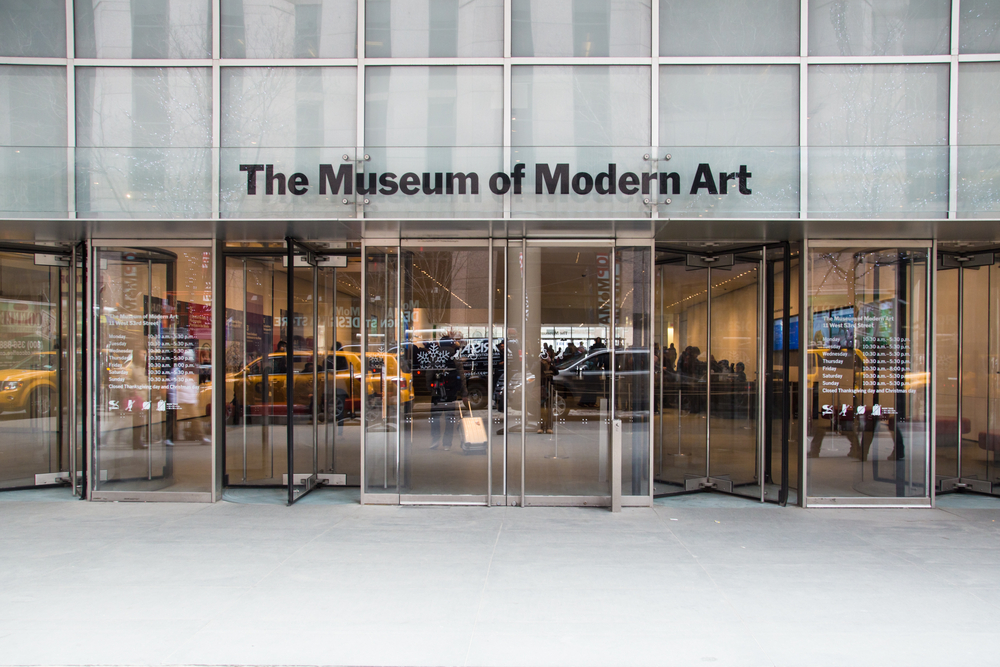Obtaining Refik Anadol’s work forms part of the current effort at the Museum of Modern Art (MoMA) to adopt digital work and blockchain in the long term.
New York City’s (NYC’s) MoMA has realized ‘Unsupervised-Machine Hallucinations’ for its long-term collection. The generative artwork utilizes artificial intelligence (AI) to generate visual designs motivated by the museum’s history.
New York’s MoMA Privileged to Exhibit Turkish Digital Artist Anadol’s Artpiece
Refik Anadol, a Turkish digital artist, created this piece for MoMA last year. In this case, he made a state-of-the-art machine learning model to take over 200 years of art from the museum’s collection. Afterward, it should produce a series of ever-changing audiovisuals that change, re-explicate, and translate the original works.
Different alterations, including movement, light, weather, and acoustic, continuously change the work’s sound and look. Currently, it is on display in the MoMA lobby up to October 29, following the exhibition’s earlier extension caused by huge crowds turning up to sit and see the regularly changing view.
A United States magazine labeled it one of the most crowd-attracting and contentious exhibitions in NYC. This attractive, 24-foot-tall video artwork has fascinated audiences in the museum. However, it has evoked talks concerning AI’s role and other contemporary tools in creating art. In addition, it has yielded conversations concerning how organizations must approach and classify such creations.
MoMA’s Showcasing Digital Artpiece Reignites Pushback Against Generative AI Tools
Artwork made using artificial intelligence tools has vastly been contentious, and projects, including video games and television shows, that depended on the technology have encountered significant criticism.
The algorithm’s output did not please everybody. For example, Jerry Saltz, a famous art critic, labeled the work a ‘hyped lava lamp.’ Additionally, he claimed that Anadol’s creation was just meant to please the crowd and was unexceptional.
A Wednesday tweet by Anadol showed that ‘Unsupervised’ is the initial generative artificial intelligence and tokenized network’ to make it to MoMA’s long-term collection.
An associated nonfungible token (NFT) collection is also a part of the ‘Unsupervised’ collection. In 2021, Anadol promised to mint an NFT assortment for each art piece he makes. This came after introducing an on-chain art assortment that used upcoming technologies, including code and augmented reality (AR), to translate more traditional art forms.
At the time, Anadol said that since he trusts the world of crypto art, everything he does in the physical world will always have a matching piece in the world of crypto.
The MoMA website shows visitors can mint a free nonfungible token linked to ‘Unsupervised,’ a blockchain-founded memento. In this case, they scan a QR code close to the artwork.
Anadol is an ex-Google artist-in-residence and is a famous name in the growing field of artificial intelligence. His work is currently on display at the newly opened MSG Sphere in Las Vegas. This arena comprises a 580000-square-foot vault covered by the world’s most giant screen. The piece ‘Machine Hallucinations-Sphere’ is undoubtedly the most extensive artificial intelligence network ever made.
MoMA Identifies with AI Artwork in Unsupervised, 3FACE, and Human One Collection
Ryan Zurrer, a crypto entrepreneur, donated ‘Unsupervised’ through 10F1, his art assortment. The donation also involved backing from the RFC Collection led by Desiree Casoni and Pablo Rodriguez-Fraile. Further, Ryan owns ‘Human One,’ a physical-meets-digital piece sold for $28.9M in 2021 by Mike ‘Beeple’ Winkleman.
MoMA’s announcement on Tuesday showed that besides ‘Unsupervised,’ it had attained ‘3FACE’. This adaptive generative artwork from Ian Cheng, a United States artist, evaluates participants’ on-chain wallet data to generate their personalities’ visual representations.
According to MoMA, these acquisitions are exclusively part of a vast push for more direct involvement with the blockchain and digital art and include them in the museum’s philosophy and assortments over the long term. Last week, ‘MoMA Postcard,’ an interactive art initiative meant to enlighten visitors concerning the opportunities of making collaborative art on the blockchain, was announced.
In a statement, MoMA said the new initiatives highlight the museum’s persistent dedication to backing artists using the upcoming technologies to enhance their visual vocabularies and creative exploration. Additionally, the museum is committed to improving the impact of the artists’ work and aiding in navigating transformative change.
Editorial credit: littlenySTOCK / Shutterstock.com
